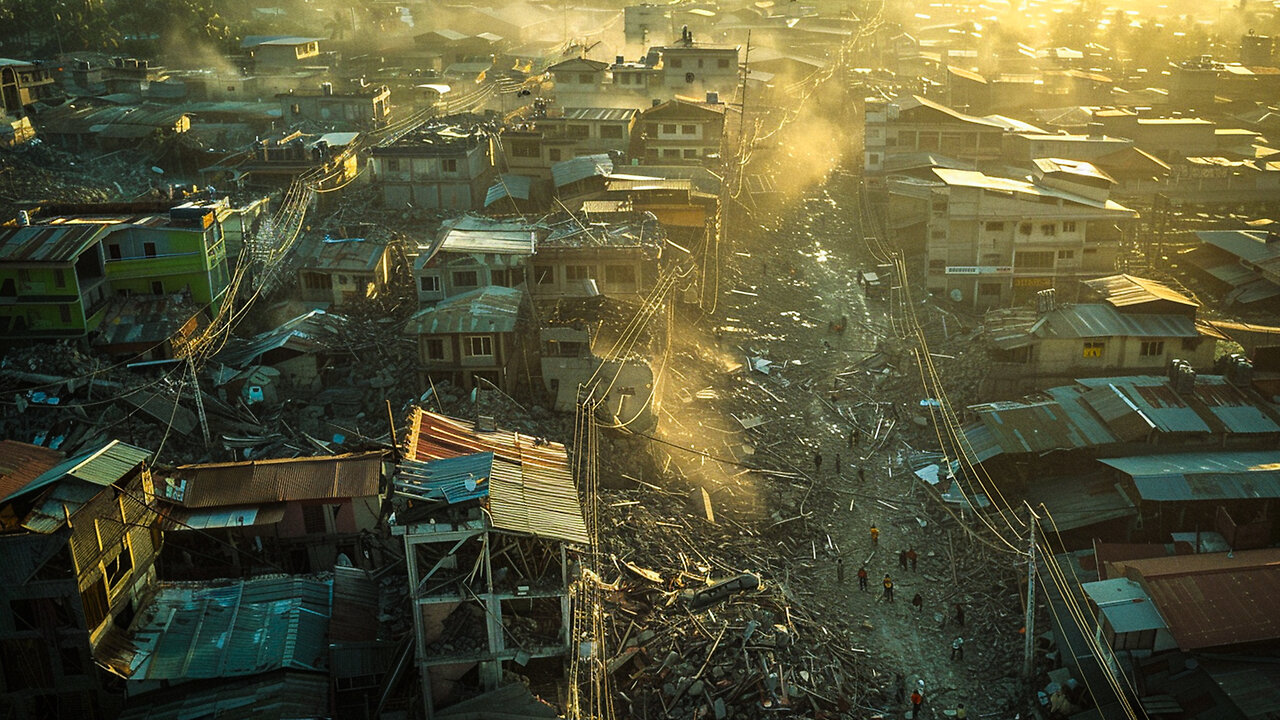Premium Only Content

6.9 Earthquake Devastates Philippines. Rare Seismic Activity in Venezuela
On September 30th, a powerful earthquake with a magnitude of 6.9 struck the province of Cebu in the Central Visayas region of the Philippines. At 9:59 in the evening local time, the tremors were recorded about 12 miles from the coastal city of Bogo, which has a population of approximately 90,000 residents. This became one of the strongest earthquakes in the central part of the Philippines in the past decade.
The seismic event occurred at an extremely shallow depth — only about 3 miles — which caused the subsequent destruction.
By October 1st, authorities had already reported 69 fatalities and dozens of injuries. Fearing new tremors, thousands of residents spent the night outdoors. During the first ten hours alone, the Philippine Seismic Network registered 722 aftershocks with magnitudes up to 4.8.
The province of Cebu suffered the most severe damage, prompting the declaration of a state of emergency. In the municipality of Daanbantayan, a 139 year-old church completely collapsed. In the city of Bogo, roads and bridges sustained significant damage, hampering the work of rescue services. In San Remigio, part of the roof of a sports complex collapsed during a basketball game, resulting in casualties.
Even cultural events were affected: in Cebu, the earthquake interrupted the final of the “Miss Asia and the Pacific International — 2025” beauty pageant.
The disaster also damaged power lines, leaving most of Cebu and neighboring islands without electricity, and caused serious disruptions to the water supply.
The increasing number of earthquakes with magnitudes of six and above is an extremely alarming trend that scientists from the international ALLATRA movement have been warning about for several years. According to their scientifically based mathematical model, this growth follows an exponential pattern, with new and increasingly powerful earthquakes occurring in regions where such events were previously rare or nonexistent.
A series of powerful earthquakes shook northwestern Venezuela at the end of September. The epicenters of the seismic events were located in Zulia State, within the Maracaibo Basin — the heart of Venezuela’s oil industry.
The first tremor, with a magnitude of six point two, struck on the evening of September 24th near the city of Mene Grande. Within a few hours, additional earthquakes followed, with magnitudes starting from 4.9 and one of them was even stronger than the initial shock, reaching a magnitude of 6.3. The earthquake foci were located at depths ranging from about five miles to nine miles.
The tremors were felt across several Venezuelan states and in neighboring Colombia. Residents evacuated from homes and office buildings, while videos posted on social media showed shops and houses shaking violently as people rushed to find shelter.
According to data from the United States Geological Survey, apart from the two seismic events recorded at the end of this September, only thirty earthquakes with magnitudes of 6 and above have occurred in Venezuela over the past one hundred twenty-four years.
Why seismic activity has increased so rapidly and what to expect in the coming years was discussed in a video report by Dr. Egon Cholakian, one of the representatives of the ALLATRA scientific community.
-
 18:12:15
18:12:15
ALLATRA
1 month agoALLATRA TV LIVE 24/7
5.66K4 -
 1:03:56
1:03:56
Glenn Greenwald
3 hours agoIs MAGA Divided? Revisiting the Major Controversies on the Right
25.4K15 -
 LIVE
LIVE
Mally_Mouse
20 hours ago🎮 Let's Play!!: Stardew Valley pt. 33
178 watching -
 33:09
33:09
Exploring With Nug
2 hours agoThey Weren’t Ready for Nightfall on Blood Mountain… So I Helped Them Down
118 -
 LIVE
LIVE
The Daily Signal
2 hours ago🚨BREAKING: Democrat Steals $5 Million from FEMA, Trump-Mamdani Meeting Gets Bizarre
151 watching -
 1:02:11
1:02:11
BonginoReport
4 hours agoJ.D. Vance Threatens to Kill JD Vance?! - Nightly Scroll w/ Hayley Caronia (Ep.183)
79.7K22 -
 3:09:50
3:09:50
Nerdrotic
15 hours ago $9.49 earnedWarner Bros Fire Sale! | Last Ronin CANNED | WICKED For Good REVIEW - Friday Night Tights 381
27.2K8 -
 LIVE
LIVE
Akademiks
1 hour agoMeg Thee Stallion Back LYING again? Offset vs Finesse2x. 6ix9ine house robbed.. HERES WHO DID IT
894 watching -
 LIVE
LIVE
SpartakusLIVE
2 hours agoFriday Night HYPE w/ YOUR King of Content
141 watching -
 LIVE
LIVE
Blabs Life
1 hour agoPeter Jackson's King Kong: The Official Game of the Movie | Noob Plays
78 watching